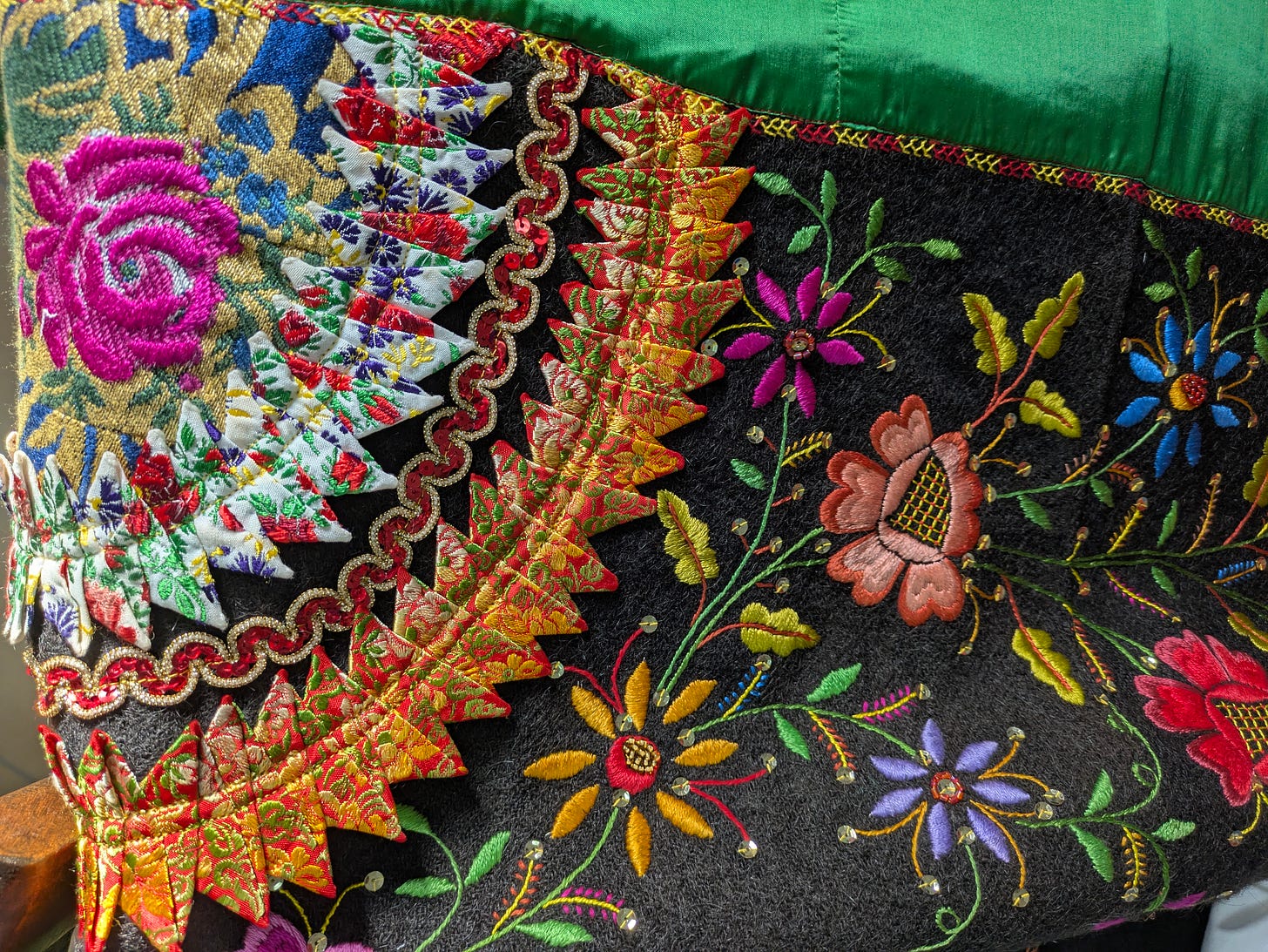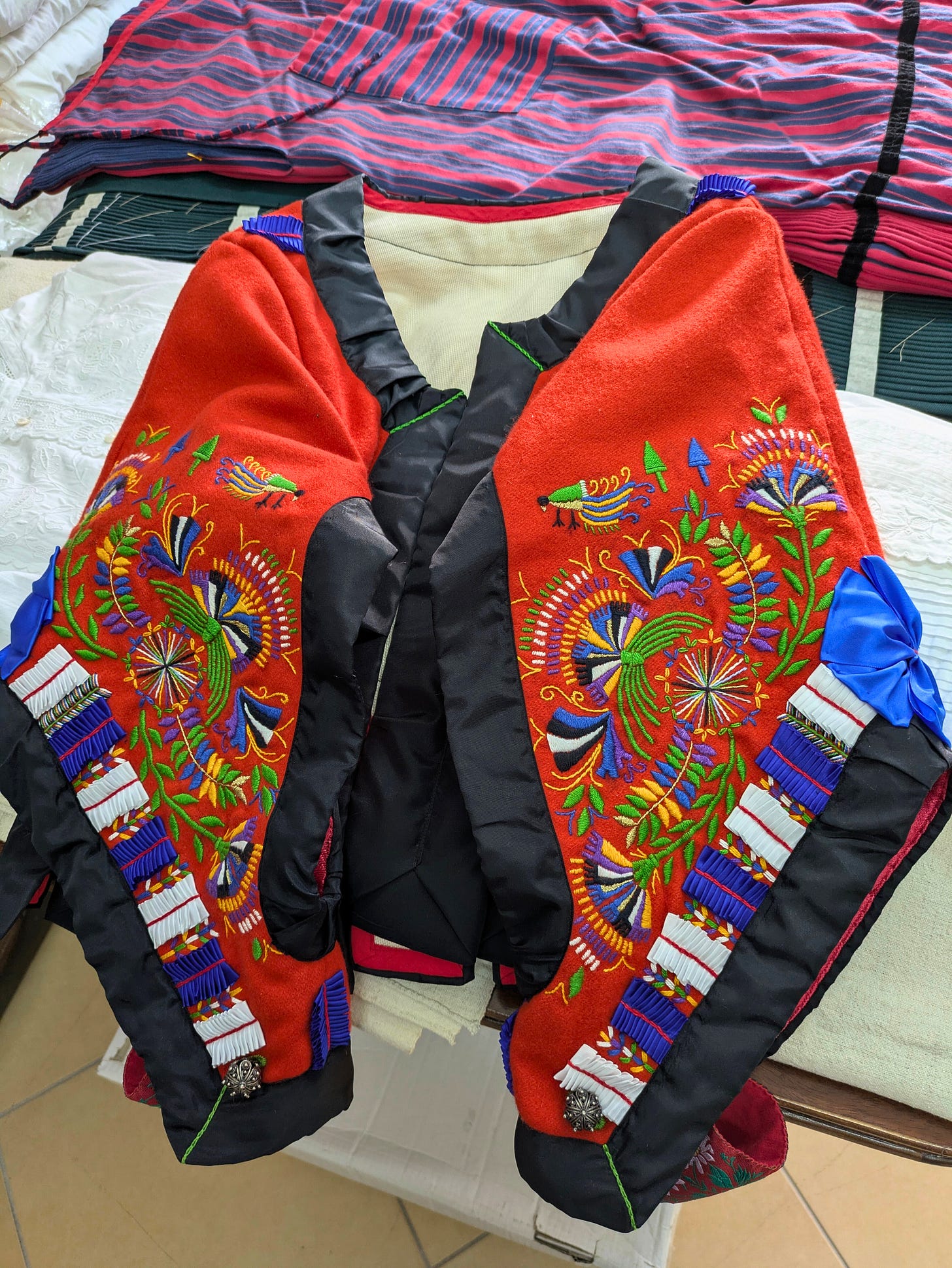In a Tiny Sardinian Village, a Traditional Craft Holds on by a Thread
Maria Luisa Frongia sews and embroiders traditional garments by hand, one at a time, keeping a centuries-old custom alive in a rapidly changing world.
In a Tiny Sardinian Village, a Traditional Craft Holds on by a Thread
Story by Julia Reynolds
In an upstairs workshop in the small village of Samughéo, Sardinia, Maria Luisa Frongia, 58, paints memories, seasons, and stories with needle and thread.
While Sardinia’s coastal towns have been significantly more exposed to outside influences, the customs and traditions of its inland villages, like Samughéo, remain largely intact. One is more likely to overhear the local dialect, Sardo, spoken here than Italian—at least among the older generation.
The artisans of Samughéo take pride in using traditional techniques in their work: Thread is still spun from local wool, and dyed with foraged herbs, lichens, and even dried insects; carpets are still woven by hand on wooden looms.
Inside Frongia’s workshop, the tables are draped with fabric, thread, and beads in every color imaginable. A vivid green, embroidered vine climbs the bodice of a corset; layered ribbons in rosy sunset hues edge a cloak; and foamy laces accent vibrant crimson skirts. I touch a particularly ornate jacket, asking in my stilted Italian how long it took to make. Frongia smiles and tells me it took 30 days, working on it every day.
“Each stitch,” she says, “comes from a study, a memory, a family tradition from our not-too-distant past.”
Frongia seems like a humble person, but one can see the pride she takes in her craftsmanship. She tells me she likes having visitors, “so that each person can touch an ancient work that has withstood the passage of time.”
Frongia’s passion for sewing clothes began in childhood. She first learned to make dresses for her dolls from her mother and grandmother; later, embroidering and sewing traditional dresses, shawls, and other clothing became her profession.
Although it’s difficult to imagine how this time-consuming, specialized work could be financially viable, especially in a town of just 3,000 inhabitants, Frongia has a slow-but-steady stream of clients, mostly from local folk groups. She works alone and makes each piece to order, so she only produces a few garments per month. Clients come to her workshop for custom fittings, though some items, like shawls and stoles, can be used communally by folk associations.
“Sardinia’s current problem is depopulation,” Frongia tells me. “New generations are leaving the small towns and moving to cities in northern Italy, or abroad. In my opinion, this is a real shame.”
On an island that has been inhabited for at least 20,000 years, it’s hard to accept that one of its loveliest traditional crafts could fade away in a single generation. I ask Frongia if she has children, if there is a chance they might carry on her embroidery techniques. “I have only sons”, she tells me, a bit wistfully. “They are not interested in embroidery.”
If you enjoyed this story, you might also like…
Women Who Embroider the Air
Written and photographed by Erla Zwingle
On a small island near Venice, the ancient art of hand-sewn lace is still being practiced today. Meet the master craftswomen of Burano, who are keeping this tradition alive in a fast-changing world.
Western Wear Designer ‘Jukebox Mama’ Paints with Thread
written and photographed by Meredith Lawrence
Sarie Gessner—known for her Western-inspired suits, custom embroidery, and passion for music—is dressing some of country and Americana’s brightest stars for the stage.
Craftsmanship Magazine focuses on master artisans and innovators whose work informs our quest: to create a world built to last. In addition to our Substack offerings, you’ll find a rich archive of stories, podcasts, photo essays, and documentary shorts on our free website—along with community resources like our Artisans’ Directory, our guide to U.S.-based craft & folk schools, and much more.










